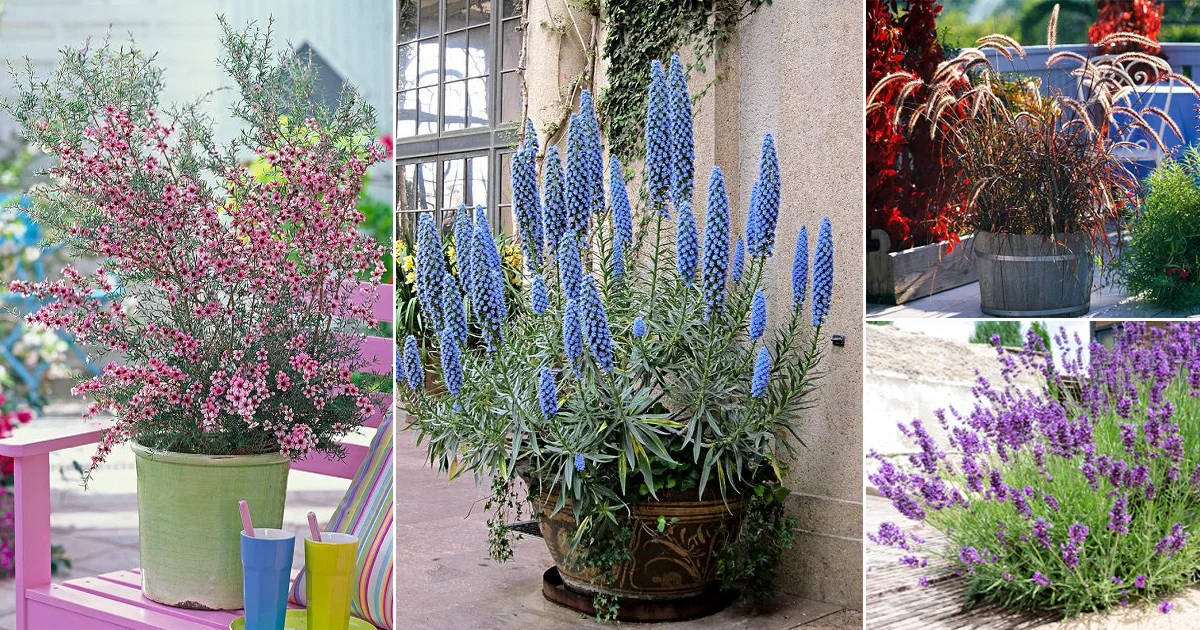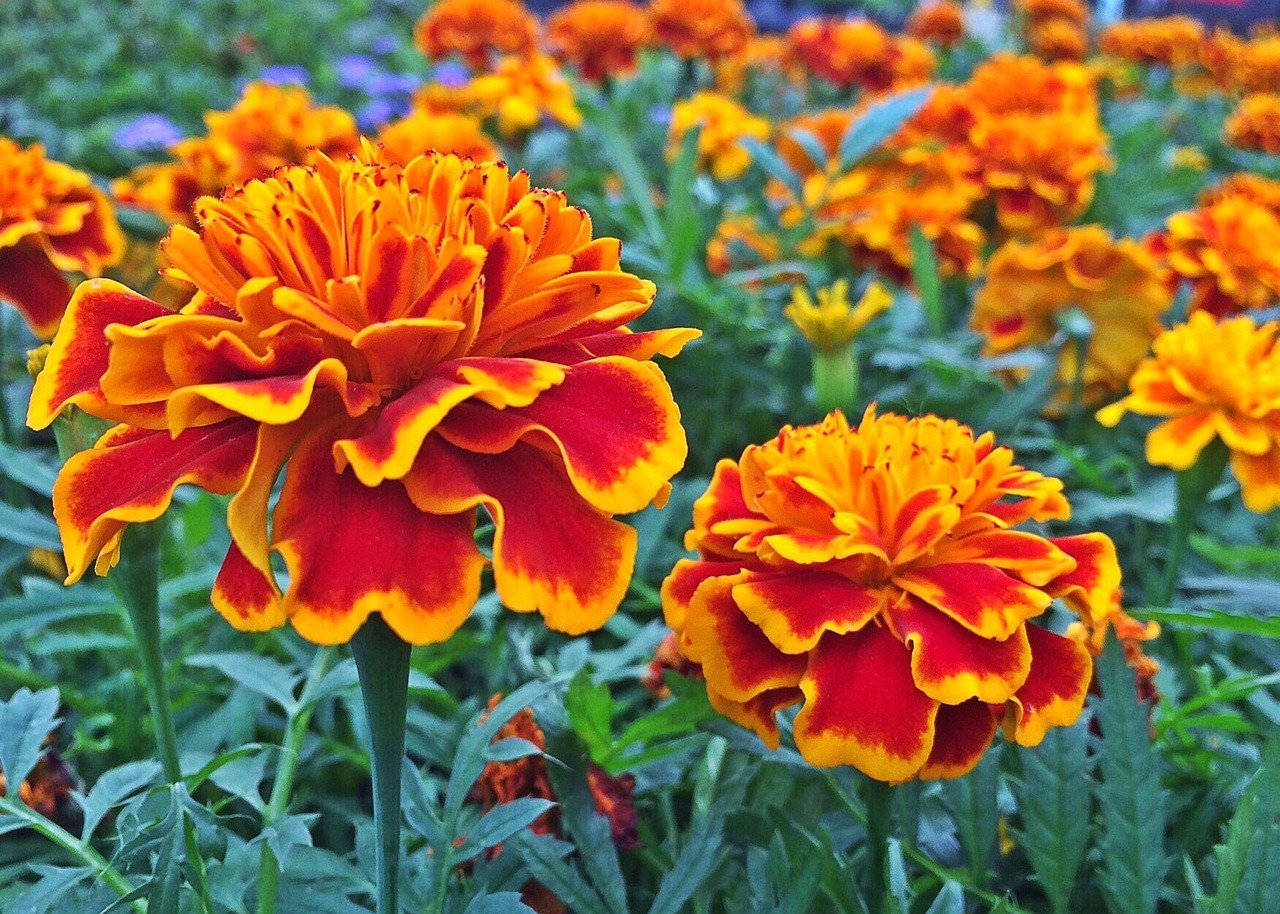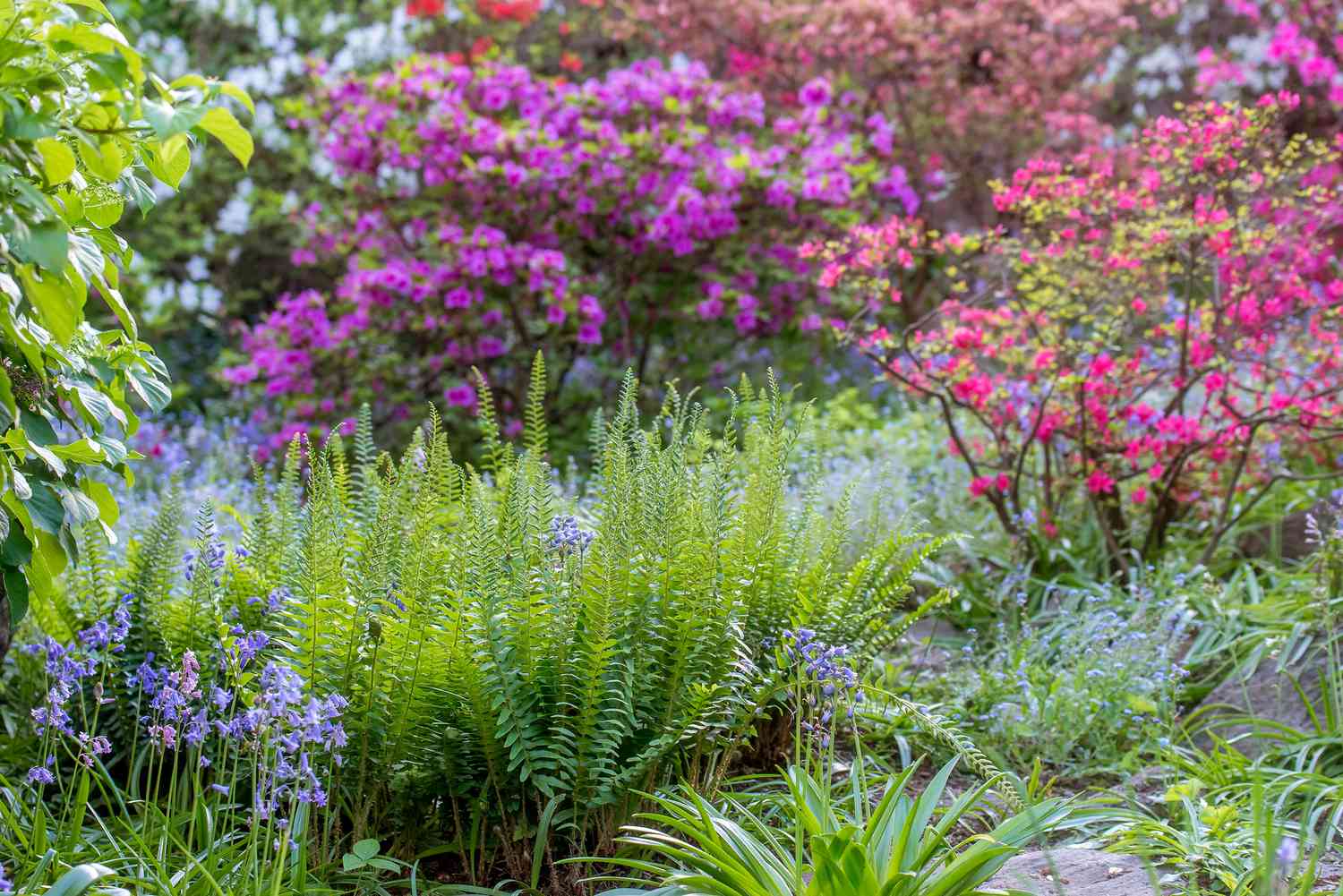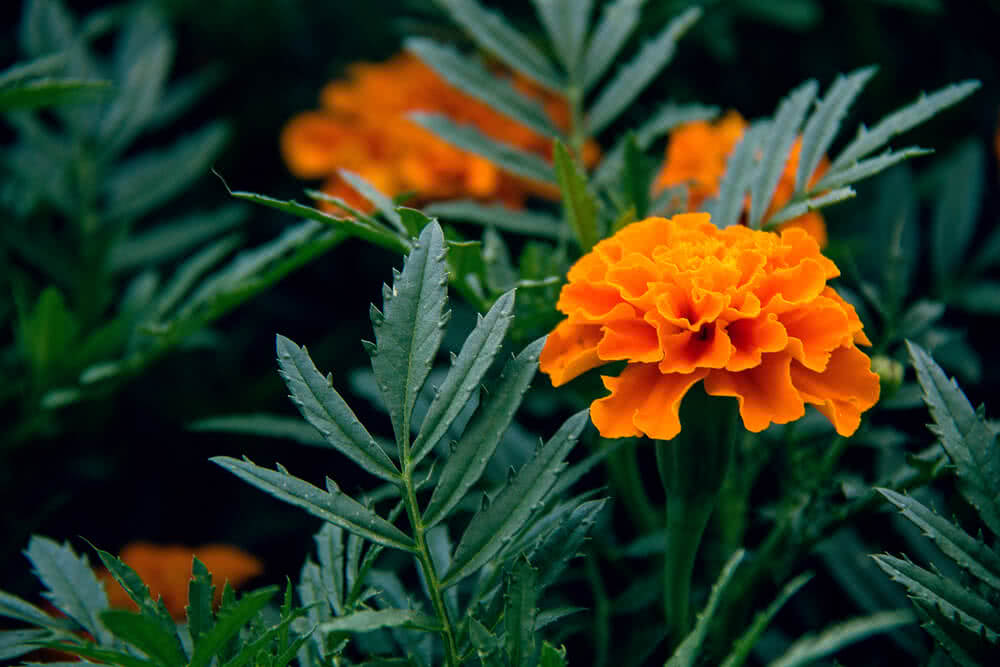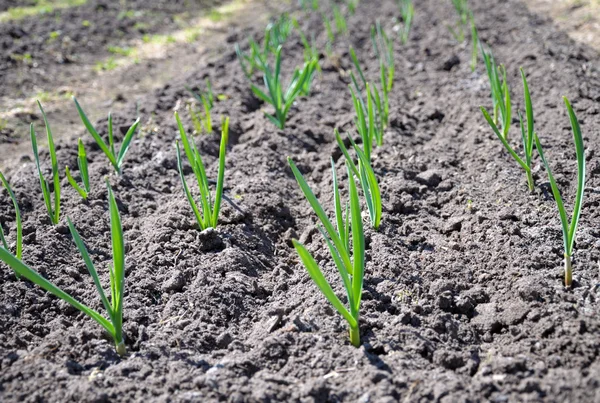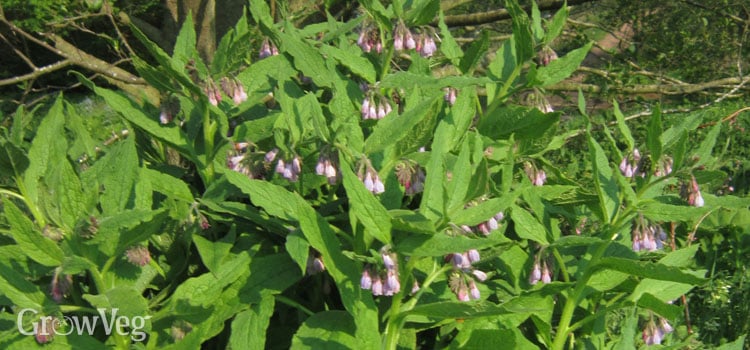16 Best Companion Plants to Grow With Rhubarb
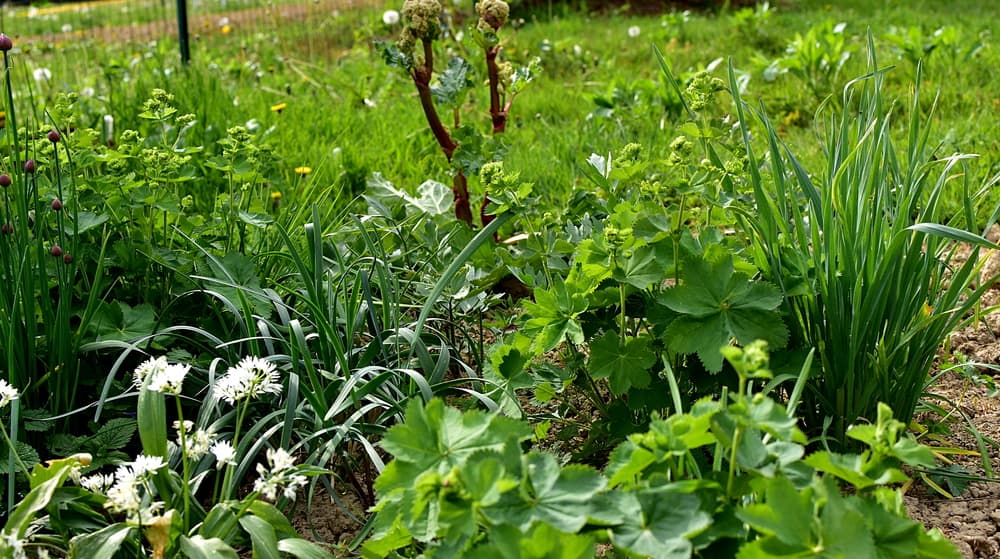
Table of Contents
Growing an entire garden by yourself can be daunting if you are a novice. However, one of the simplest plants to grow is Rhubarb. But, its leaves are lethal, and you must remove them while the stalk is harvested.
Remember, this season’s crop has disease and pest issues. What to do in that case? You must go for companion planting as it can aid in growing Rhubarb in a better way with more space.
Rhubarb companion plants can be fruitful to your garden in many ways, as it saves space. On top of that, it enhances yields, boosts beneficial insects, deters pests, smothers weeds, expands garden crops, and promotes pollination.
Let’s diversify our know-how regarding the top 16 rhubarb companion plants and how they are beneficial.
Best Companion Plants To Grow With Rhubarb
1. Beets

Beets have 36-48 inches-deep roots, which constitute water and nutrients. They ooze the extra water and nutrients in the soil, and Rhubarb reaches it out. In addition, beets break down the soil for Rhubarb so that its roots can grow efficiently. Besides, beets save Rhubarb from being woody or losing its flavour too early. Then, Rhubarb aids beets by shading in the summer season. Therefore, it is advisable to plant beets and have Rhubarb between the rows, which paves for the top-end results.
Beets are vulnerable to attacks from numerous insect pests, comprising webworms, beetles, aphids, leafhoppers, and cutworms. If Rhubarb is present next to your beet plant, it can deter these pests. This aspect decreases pest infestation in your garden, enhancing the yield of your rhubarb and beet plants.
2. Catnip
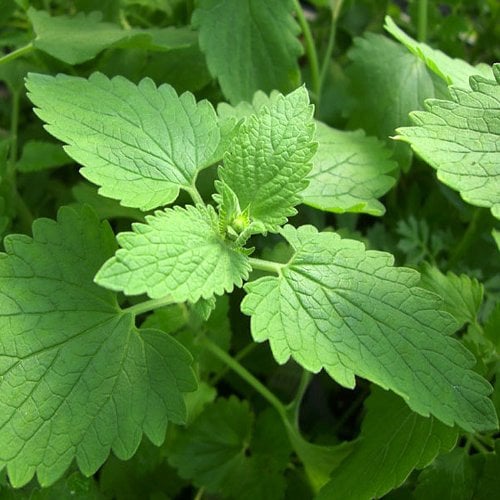
Catnip is the most commonly suggested companion plant for every crop as its smell is repulsive to several kinds of insects. On top of that, it is the best oil for staying away from mosquitoes.
When you plant Catnip with Rhubarb, it can prevent flea beetles, aphids, weevils, cabbage worms, and several other pests. Additionally, it is the best herb to plant in a therapeutic herb garden. Moreover, Catnip is a great herb for your sleep. Try to mix it in your evening tea for a sound sleep. Also, Catnip draws pollinators for Rhubarb. The Catnip should be grown around the Rhubarb in a circle or the nearby row.
3. Alliums
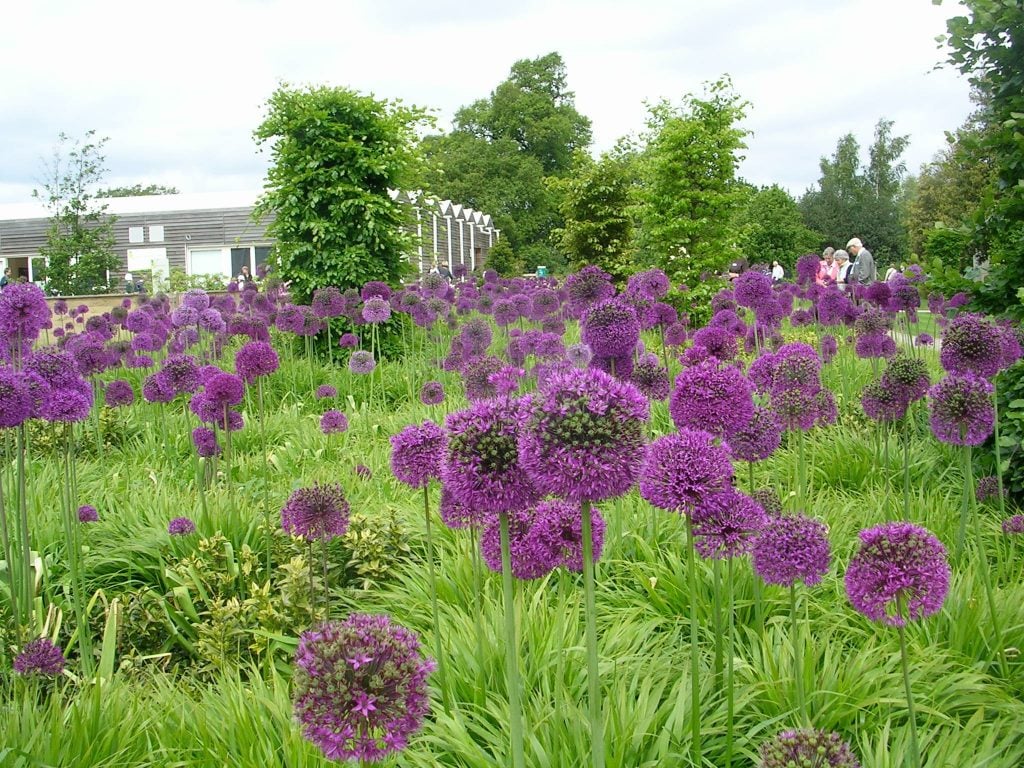
Alliums have onions, garlic, leeks, and chives. Every allium has a strong smell. This odour drives back insect pests from Rhubarb. Alliums particularly deter ants which are an issue for aphids, Rhubarb, leaf beetles, and whiteflies. They discourage rabbits and hits from intaking Rhubarb. Alliums get the light shade from the Rhubarb. Sow the alliums in a loop or in an adjacent row surrounding the Rhubarb.
4. Beans

Beans are incredible rhubarb companion plants as they are legumes and plants with nodules in their roots and fix nitrogen in the soil. They enhance the quality of the yield of the plants since they provide nutrients to the soil.
When you plant bush or pole beans nearby, your rhubarb plant can obtain vital nutrients. Beans are a beneficial plant in your garden, giving proper ground cover. Also, it avoids water loss occurring from evaporation. They can decrease the growth of weeds.
On top of that, Rhubarb is known as an insect repulsive to deter aphids. The leaves of Rhubarb have oxalic acid, which makes them unsuitable for intake. The result is that aphids can consume everything drawn to your bean plant and will be driven back through the acid in the Rhubarb surrounding them. Therefore, the aphid of beans decreased drastically.
5. Marigolds

Marigolds are stunning edible flowers, mostly in yellow but also in white, golden, or orange colour, with green leaves.
When Rhubarb and marigold are planted side by side, they keep cabbage worms, mice, aphids, squash bugs, nematodes, whiteflies, and mosquitoes away.
These facets can decrease the invasion of pests and diseases among the plants in your garden. The dazzling flowers of marigold plants can draw pollinators and other insects to your Rhubarb. These insects are predators of several pests that hit garden crops.
6. Yarrow
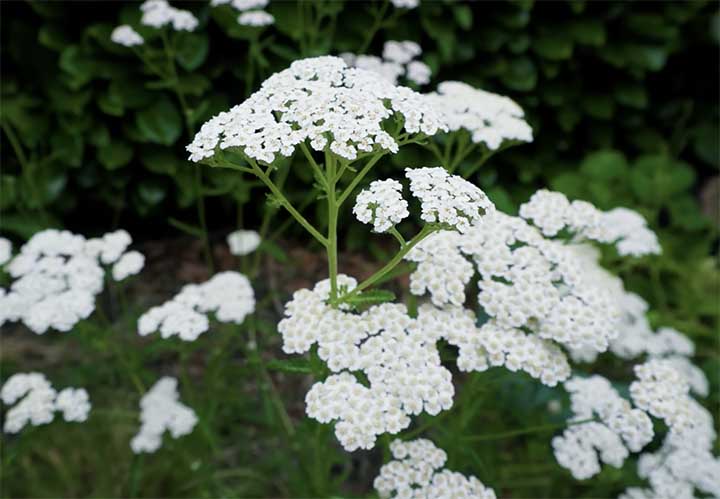
Yarrow, scientifically known as Achillea millefolium, is a perpetual herb with several tiny flowers that lure pollinators and aphid-eating insects into the garden. It has a tall taproot which can boost soil structure and can extract nutrients from within the soil. It is very simple to grow and requires less water and care.
Also, yarrow can bear partial shade to full sun. It can reduce pests that can damage the rhubarb plant. Besides that, it is a great medical herb, usually for fevers, wound healing, and much more.
7. Strawberries
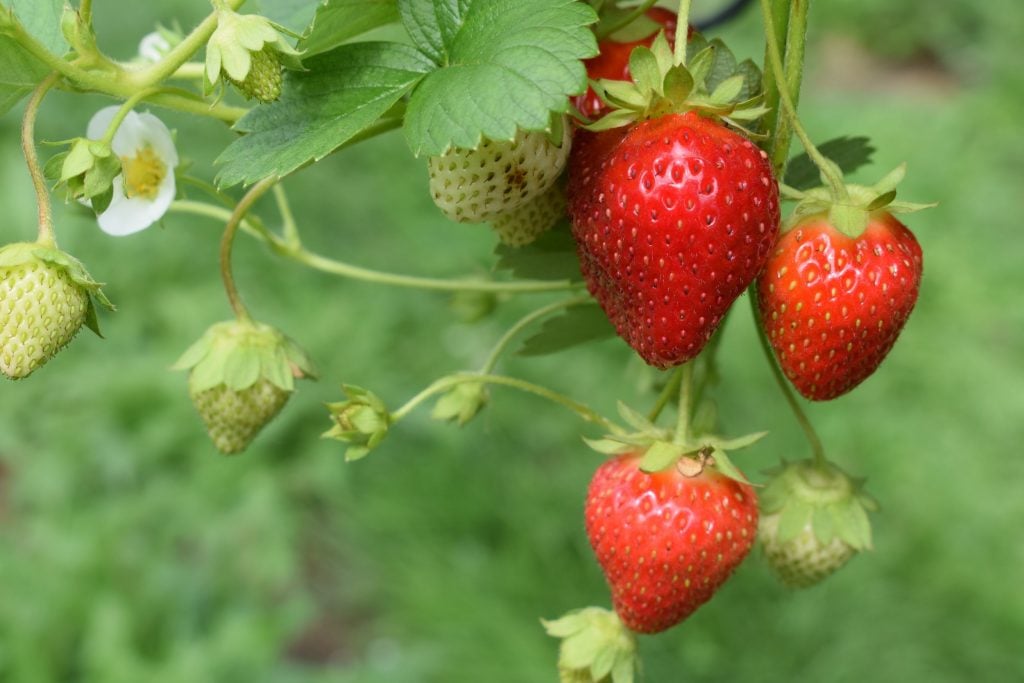
Strawberries are an outstanding mulch for Rhubarb, which keeps the soil moist, avoids erosion, and is weed-free. Strawberry companion plants stretch everything from vegetables to herbs and fruits.
Their taproots crack the soil to let the rhubarb roots grow deeply. On the other hand, strawberries get shade from the Rhubarb. Grow strawberries within six inches of the rhubarb plant to get the perks of their mulch function. Rhubarb and strawberries do not compete for space or nutrients. Their blossoms look eye-catching against the rhubarb plant’s red stalk and dark green leaves.
8. Thyme
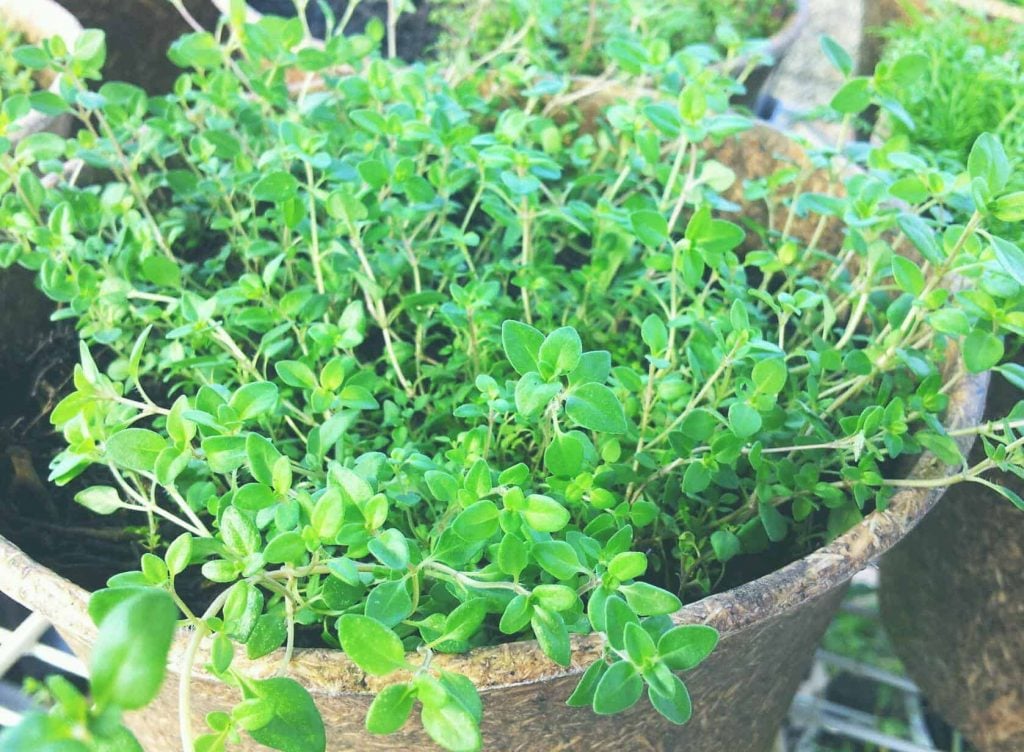
Thyme is a stunning aromatic herb, a rhubarb companion plant that deters pests such as vegetables and cabbage. It has medicinal and culinary uses. Thymes is also a strong anti-microbial and the proper herb for cough. Its powerful scent will deter pests as it encloses the soil and preserves moisture.
Select creeping varieties to envelop soil. You can break your thyme and use it as a ground cover or companion plant throughout the garden. Also, thyme companion plant stops the growth of weeds which absorb the soil’s nutrients.
9. Chives
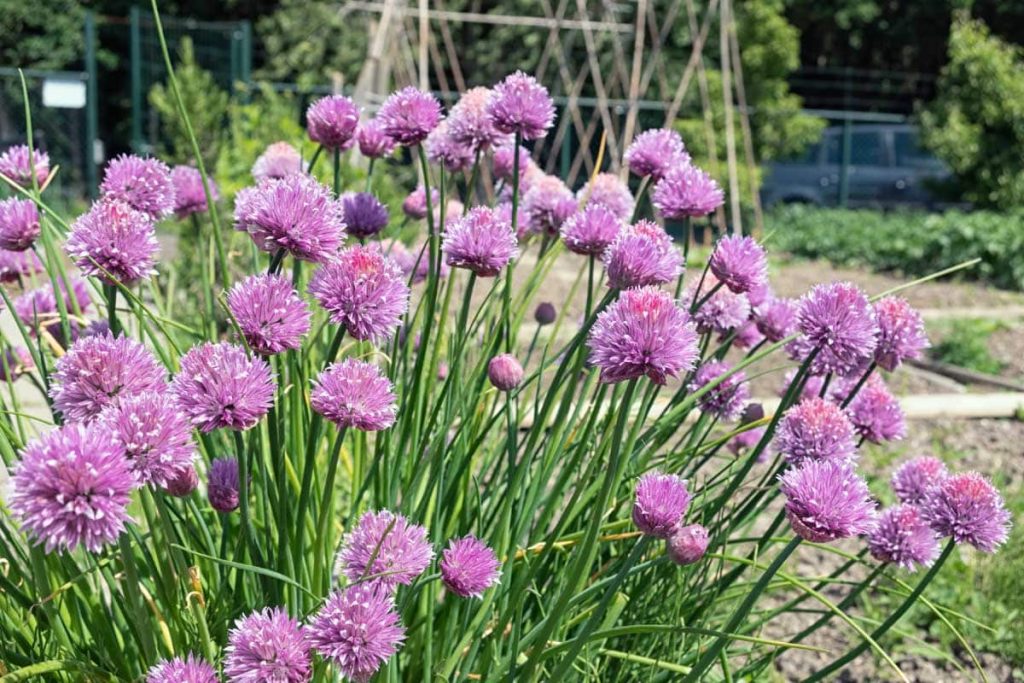
A part of the allium family with onions and garlic, chives’ strong odour keeps away pests. It is a persistent herb and does not require replanting as much rhubarb companion plants need every year.
Chives are self-sown planted, so ensure to cut chive flowers to avoid having chives throughout your yard. They are the best edible flowers you can include on your plate, which gives a delicious chive flavour to dishes and salads.
10. Garlic
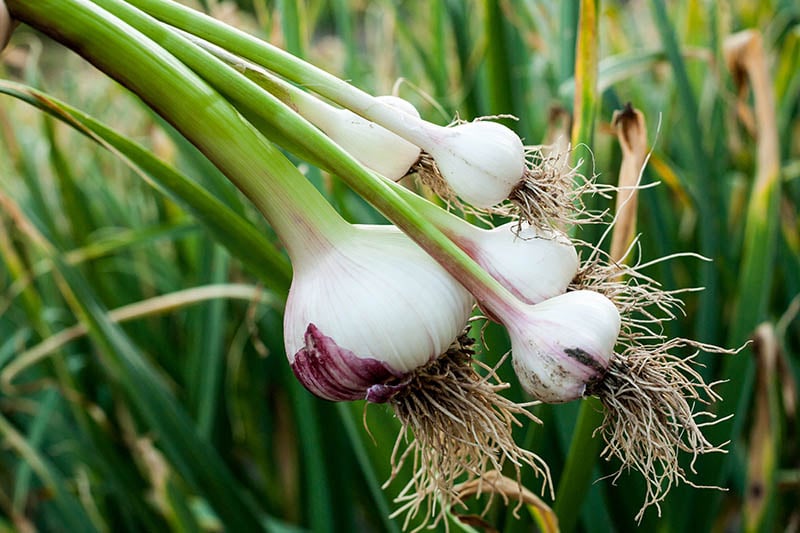
Garlic’s potent aroma keeps pests like beetles, aphids, and slugs away. Also, it is helpful for ruinous Japanese beetles if they cause an issue in your garden. Garlic is usually grown annually, but you can grow it as a perennial to prevent any disruption in the soil surrounding the rhubarb.
Its green tops are harvested during its growth as a perennial, and its bulbs are left in place. Or else, you can grow annual garlic far from your rhubarb, which would not bother the roots when you plough the bulb.
11. Cabbage
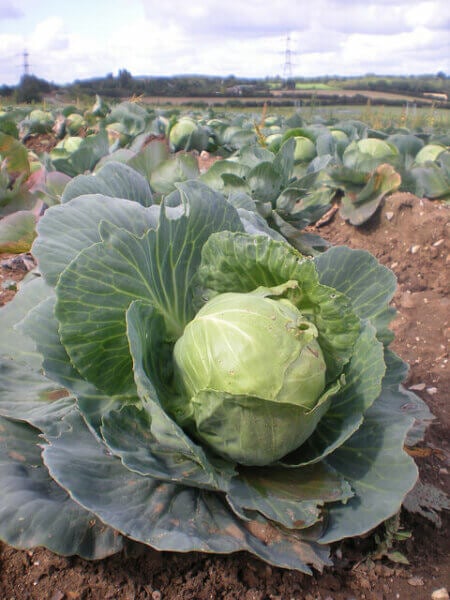
Rhubarb is a beneficial plant to cabbage as it keeps pests and whiteflies away from the plant. The powerful aroma of rhubarb and its dead leaves help decrease your garden’s pests. Cabbage plants discharge biotoxins demonstrating activity against pests like fungi, bacteria, nematodes, and soil-borne pathogens and weeds. In this manner, they abet in mitigating the pests.
Also, cabbage gives proper ground cover, so it is significant in weed and erosion control. It can seek the nitrogen in the soil post-harvest. Rhubarbs and cabbages can have their flavour and yield boosted by a companion plan.
12. Cauliflower
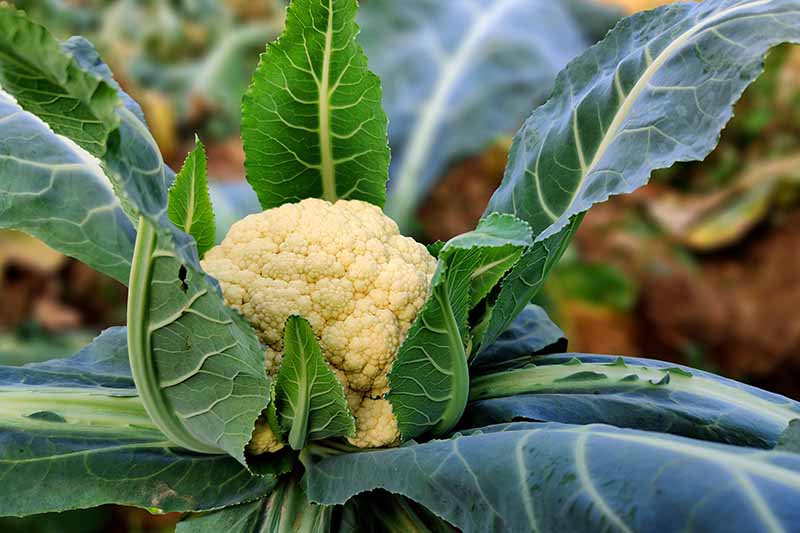
Cauliflower is a flowering plant in the Brassicaceae family harvested for its partly developed flowers called the curd or the head.
Since other brassicas, such as cabbage and broccoli, sync with rhubarb in the garden; cauliflower is an incredible companion for rhubarb. It can be fruitful for pest control and act as the best ground cover.
Few brassicas, such as cauliflower, render chemical compounds such as biotoxins which are lethal to pests and soil-borne pathogens. Also, it can control erosion which can give precise ground cover and can search for nutrients and nitrogen in the soil.
13. Kale
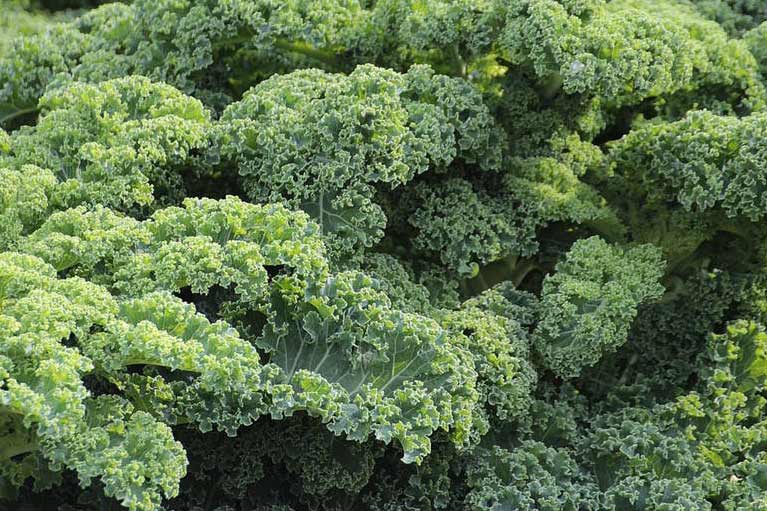
The other best garden plant is kale which is part of the family Brassicaceae. Kale is also known as leaf cabbage, a plant with purple or edible green leaves that does have a middle head.
Rhubarb and kale align next to each other in the garden. They are advantageous to each other. Kale gives ground cover and helps in pest control. Brassicas provide biotoxins, chemical compounds which might be lethal to numerous pests and pathogens that reside in the soil.
Kale can save rhubarb from nematodes, weeds, and fungi.
14. Onions
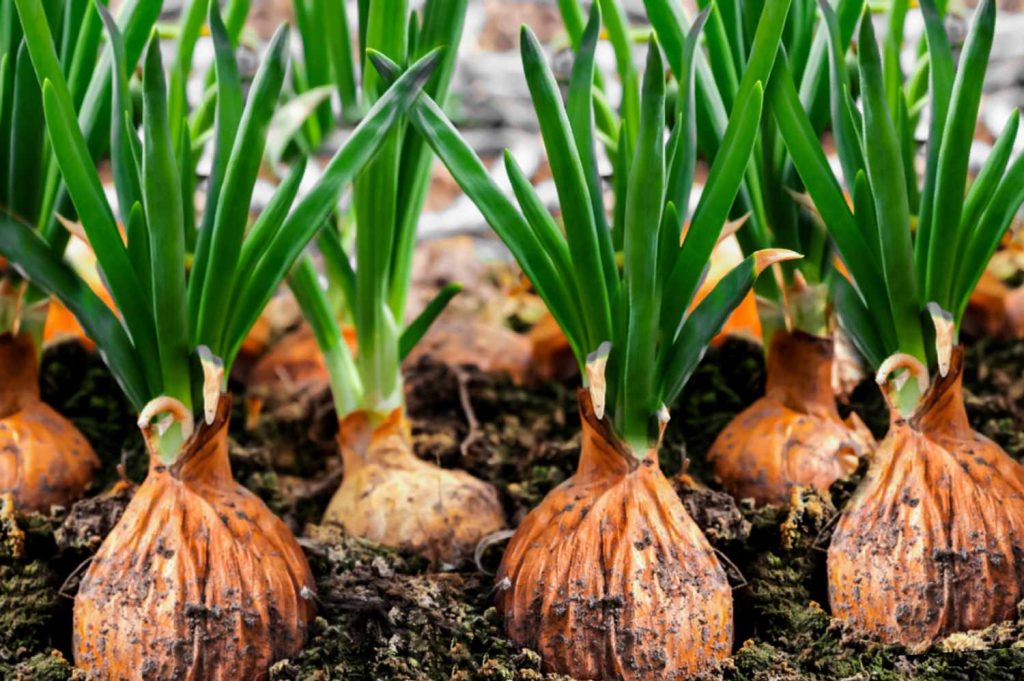
An onion is a flowering plant in the type Allium with green leaves and a bulb at the bottom. This bulb consists of short underground stems and plump leaves. Onion is a broadly harvested vegetable. Additionally, rhubarbs and onions grow in the same environments. They both require direct exposure to full sunlight, rich and drained soil, and much moisture.
Onions have low roots, so they do not have more nutrients than rhubarb’s deep taproots. As a result, they can put off many pests comprising of rhubarb that can attack plants nearby them. However, they are vulnerable to onion flies.
The aroma of rhubarbs can baffle the flies. Onions keep leaf beetles, aphids, rabbits, weevils, Japanese beetles, and whiteflies away from rhubarbs. They have normal fungicidal properties, which can safeguard your rhubarb from numerous fungal diseases.
They can break difficult clusters of soil and provide rhubarb roots space to grow in the deep layers of the earth. As they are tall, rhubarbs give shade to onions.
They protect against damage caused due to excessive sunlight.
15. Dill
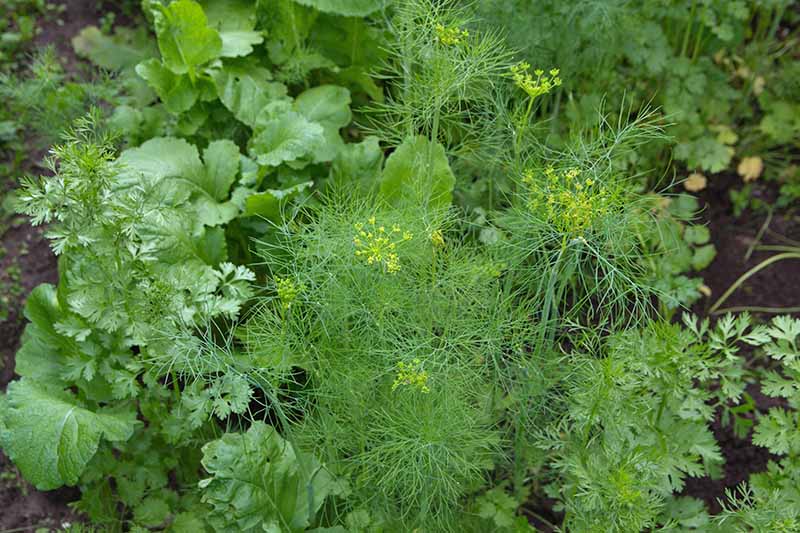
Dill is a fragrant plant, and its smell dissuades aphids. It draws pet predators which attack the rhubarb. Also, its overlong taproot brings water and nutrients to the surface. Dill expels the surplus in the soil from which rhubarb can utilize it. It can crack heavy soiland enables rhubarb’s roots to expand. Ultimately, dill draws pollinators. Grow dill within 2-3 feet of the rhubarb to provide the rhubarb with the best advantages.
16. Sage
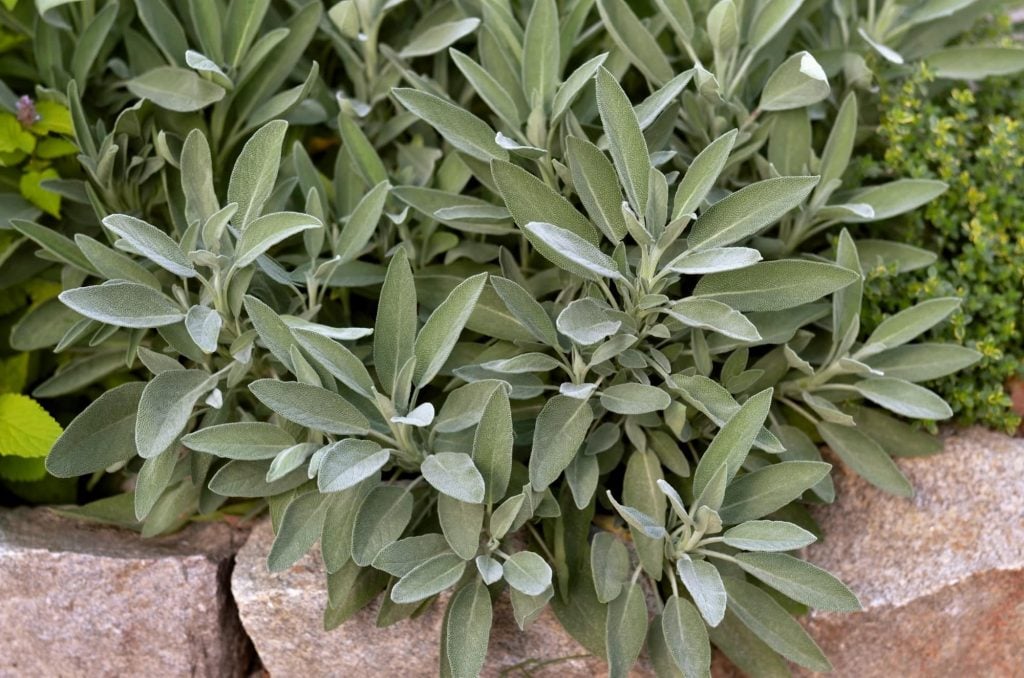
Sage draws predatory insects which reach out to the rhubarb plants and consume pests on them. The fascinating purple flowers draw pollinators. It cracks heavy soil. Hence the rhubarb roots can expand. Sage gets huge enough. Ensure you plant it far so it does not overlap the rhubarb, and let it get sufficient sunlight. Give space to the sage, and the mature plant will be 2-3 feet from the rhubarb but will not provide a shadow.
Conclusion
When you tactically choose companion plants, you can build a balanced garden ecosystem that controls pests, enhances productivity, and boosts healthy growth.
The rhubarb companion plants also reduce weeds and spread garden crops while magnifying the garden’s visual appeal.
Thus, when you experiment with those mentioned top 16 rhubarb companion plants, you will perceive positive results and a great experience altogether.
Grow now to eliminate pests, diseases, and several other issues!
Frequently Asked Questions
How Close Can You Grow Rhubarb?
You can grow rhubarb roots 3 to 4 feet apart to render sufficient space for the plant to grow to its complete size and to enable proper airflow. This spacing will aid in lessening the spread of disease. Grow the top of the crow one to two inches beneath the soil surface.
How Must You Plant Rhubarb?
You must plant rhubarb in a sunny, open site with moist, draining soil as it is not suitable for getting waterlogged in winter. It can be grown in a huge container. Avoid positioning pots in the site or planting rhubarb, which is liable to late frosts since the young stems can get damaged.
How Can You Grow Rhubarb Quicker?
You can grow rhubarb quicker by enclosing the crowns to avoid light reaching it, and it will encourage their early growth. These forced and pale stalks must be harvested while cooking while they are 20-30 cm long and are a beneficial crop.
How Can You Grow Rhubarb Properly?
You can grow rhubarb properly in a sunny, open, or partially shaded site and moist, rich soil. Also, it would nourish tremendously in a sunny, open site on a broad range of soils with much compost or manure.

